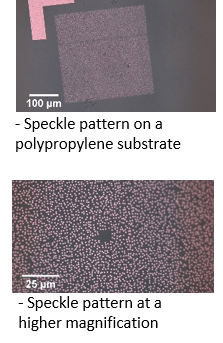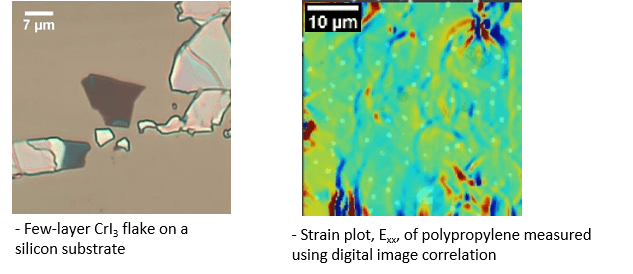Toward strain control of magnetism in few-layer CrI3
Student: Salem Wright
Major Professor: Dr. Hugh Churchill
Research Area(s):
Microelectronics
Nanoscience & Engineering
Background/Relevance
- The discovery of graphene ignited research into atomically thin materials, which can be manipulated to create new quantum devices dependent on the thickness of the materials
- CrI3 is a known monolayer ferromagnet that can be cleaved into atomically thin layers for use in quantum devices
- It is predicted that biaxial compressive strain of CrI3 will result in the formation of a quantum spin liquid, which is useful for quantum computing
Innovation
- Biaxial strain of few-layer CrI3 will be used to tune its Curie temperature
Approach
- Create a polypropylene substrate with a speckle pattern using electron beam lithography
- Exfoliate thin flakes of CrI3 onto a silicon substrate
- Use optical contrast techniques to measure the thickness of exfoliated layers
- Transfer few-layer CrI3 onto a polypropylene substrate to apply compressive biaxial strain
- Future work will use an optical cryostat to measure the Kerr rotation of few-layer CrI3 to determine the Curie temperature

Key Results
- The thickness of few-layer CrI3 flakes was measured using optical contrast
- Biaxial strain of polypropylene substrates was measured using digital image correlation

Conclusions
- The thickness of few-layer CrI3 can be measured using optical contrast
- The biaxial strain of polypropylene can be quantified using digital image correlation
- CrI3 flakes can be transferred from a silicon substrate onto a polypropylene substrate for compressive biaxial strain
